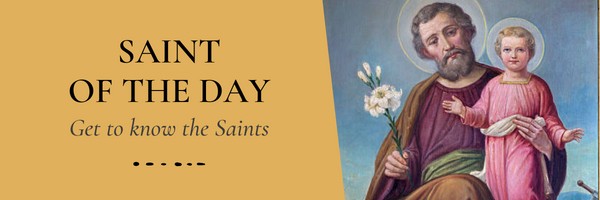 Dear readers, Catholic Online was de-platformed by Shopify for our pro-life beliefs. They shut down our Catholic Online, Catholic Online School, Prayer Candles, and Catholic Online Learning Resources essential faith tools serving over 1.4 million students and millions of families worldwide. Our founders, now in their 70's, just gave their entire life savings to protect this mission. But fewer than 2% of readers donate. If everyone gave just $5, the cost of a coffee, we could rebuild stronger and keep Catholic education free for all. Stand with us in faith. Thank you. Help Now >
Dear readers, Catholic Online was de-platformed by Shopify for our pro-life beliefs. They shut down our Catholic Online, Catholic Online School, Prayer Candles, and Catholic Online Learning Resources essential faith tools serving over 1.4 million students and millions of families worldwide. Our founders, now in their 70's, just gave their entire life savings to protect this mission. But fewer than 2% of readers donate. If everyone gave just $5, the cost of a coffee, we could rebuild stronger and keep Catholic education free for all. Stand with us in faith. Thank you. Help Now >
Cincture
FREE Catholic Classes
( Latin Cingulum .)
The cincture (or, as it is more commonly called in England, the girdle ) is an article of liturgical attire which has certainly been recognized as such since the ninth century. Then as now it was used to confine the loose, flowing alb, and prevent it from impeding the movements of the wearer. But its liturgical character appears from the prayers which even from early times were recited in putting it on and from the symbolism of spiritual watchfulness which then specially attached to it, according to the text, "Sint lumbi vestri præcincti". The cingulum is enumerated among the Mass vestments in the Stowe Missal, and this very possibly may represent the practice of the Celtic Church in the seventh century. It seems probable, however, that in the Celtic Church, as in the Greek Church of the present day, the girdle was worn only by bishops and priests ; the deacon's tunic was left ungirded. Some few surviving examples of early girdles (tenth- and eleventh-century) show that in the beginning the cincture was not always a simple cord, as it is now. On the contrary, we find narrow bands of silk and precious stuff, often richly embroidered, and these lasted until late in the Middle Ages. Some such bands and sashes were again introduced for the same purpose in the last century, but the Congregation of Sacred Rites has disapproved of the practice, though it permitted those which existed to be used until worn out (24 November, 1899). The material of the girdle is preferably flax or hemp, but wool and silk -- the latter especially for occasions of solemnity -- are not prohibited. This material is woven into a cord, and the ends are usually decorated with tassels, By way of ornament strands of gold and silver thread are sometimes introduced, particularly in the tassels at the extremities. The prayer now recited by the priest in putting on the girdle, "Gird me, O Lord, with the girdle of purity", etc., strongly suggests that this vestment should be regarded as typical of priestly chastity. Like the other Mass vestments, the girdle requires to be blessed before use.
Some kind of cincture, we may further note, is included in almost every form of religious or ecclesiastical costume. In certain religious orders it receives a special blessing, and in such familiar instances as the Cord of St. Francis or the Girdle of St. Augustine it is sanctioned and indulgenced by the Church as indicating a profession of allegiance to a particular institute. Again, the broad sash, which forms part of the civil attire of bishops, priests, and other ecclesiastics, has been imitated, apparently for sthetic reasons, in the costume of choir boys and servers at the altar. It should be said that this last development, while not expressly prohibited so long as certain rules are observed regarding colour and material, is not in any way prescribed or recommended by ecclesiastical authority.
Join the Movement
When you sign up below, you don't just join an email list - you're joining an entire movement for Free world class Catholic education.
An Urgent Message from Sister Sara – Please Watch
- Advent / Christmas
- 7 Morning Prayers
- Mysteries of the Rosary
- Litany of the Bl. Virgin Mary
- Popular Saints
- Popular Prayers
- Female Saints
- Saint Feast Days by Month
- Stations of the Cross
- St. Francis of Assisi
- St. Michael the Archangel
- The Apostles' Creed
- Unfailing Prayer to St. Anthony
- Pray the Rosary
![]()
Copyright 2025 Catholic Online. All materials contained on this site, whether written, audible or visual are the exclusive property of Catholic Online and are protected under U.S. and International copyright laws, © Copyright 2025 Catholic Online. Any unauthorized use, without prior written consent of Catholic Online is strictly forbidden and prohibited.
Catholic Online is a Project of Your Catholic Voice Foundation, a Not-for-Profit Corporation. Your Catholic Voice Foundation has been granted a recognition of tax exemption under Section 501(c)(3) of the Internal Revenue Code. Federal Tax Identification Number: 81-0596847. Your gift is tax-deductible as allowed by law.








